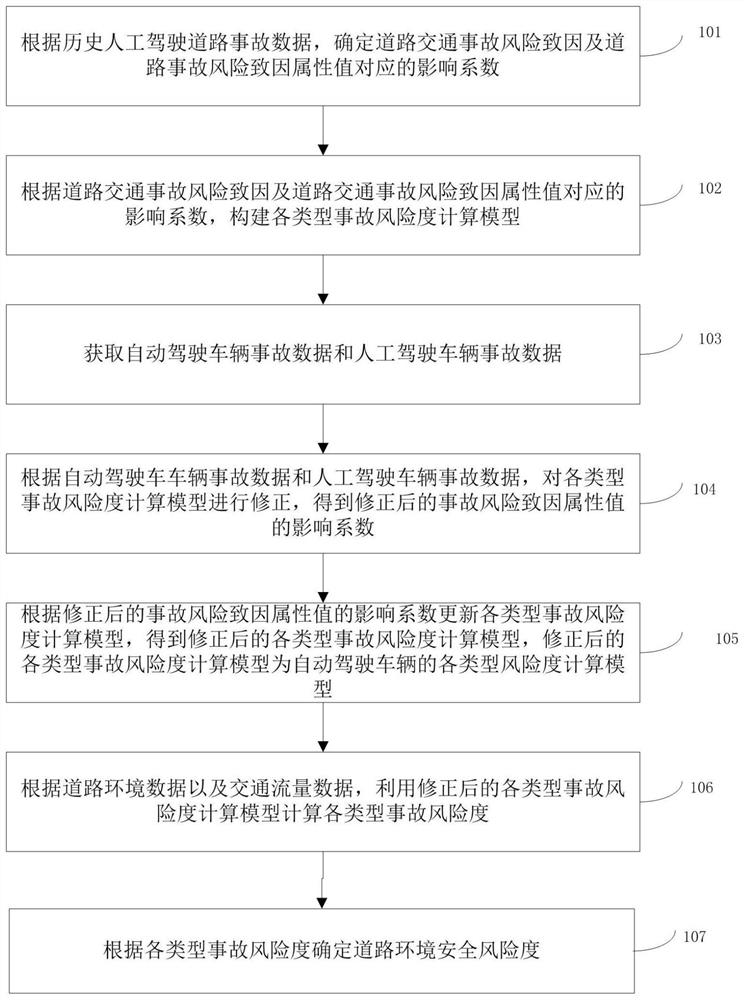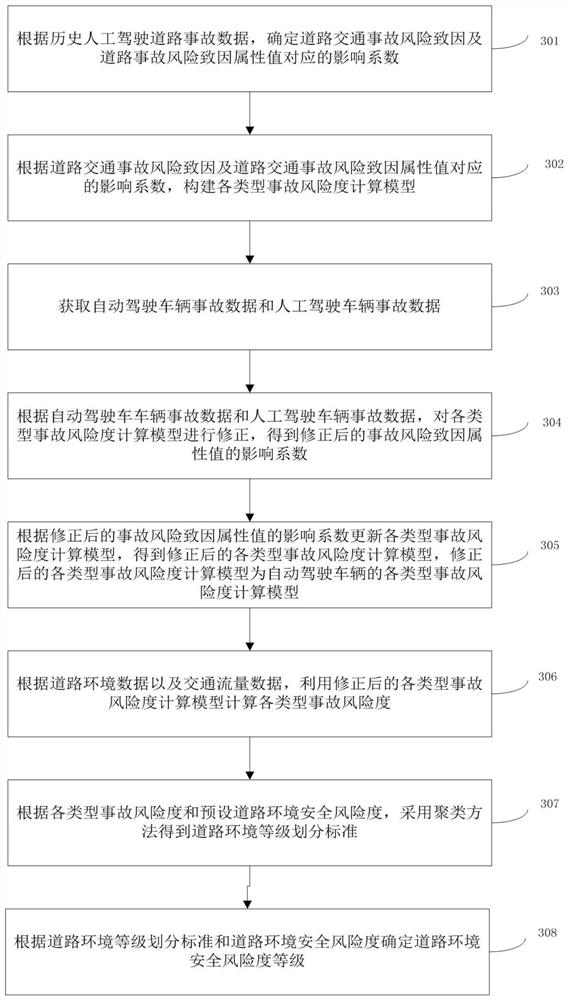Automatic driving open test road environment risk degree determining and grading method and system
A road environment and automatic driving technology, which is applied in the traffic control system of road vehicles, traffic control system, traffic flow detection, etc., can solve the problems of insufficient accident data and insufficient data volume requirements, and achieve the effect of improving scientificity
- Summary
- Abstract
- Description
- Claims
- Application Information
AI Technical Summary
Problems solved by technology
Method used
Image
Examples
Embodiment Construction
[0075] The following will clearly and completely describe the technical solutions in the embodiments of the present invention with reference to the accompanying drawings in the embodiments of the present invention. Obviously, the described embodiments are only some, not all, embodiments of the present invention. Based on the embodiments of the present invention, all other embodiments obtained by persons of ordinary skill in the art without making creative efforts belong to the protection scope of the present invention.
[0076] The purpose of the present invention is to provide a method and system for determining and grading the environmental risk of the open test road of automatic driving, so as to realize the scientific calculation of the environmental risk of the open test road of automatic driving.
[0077] In order to make the above objects, features and advantages of the present invention more comprehensible, the present invention will be further described in detail below...
PUM
 Login to View More
Login to View More Abstract
Description
Claims
Application Information
 Login to View More
Login to View More - R&D
- Intellectual Property
- Life Sciences
- Materials
- Tech Scout
- Unparalleled Data Quality
- Higher Quality Content
- 60% Fewer Hallucinations
Browse by: Latest US Patents, China's latest patents, Technical Efficacy Thesaurus, Application Domain, Technology Topic, Popular Technical Reports.
© 2025 PatSnap. All rights reserved.Legal|Privacy policy|Modern Slavery Act Transparency Statement|Sitemap|About US| Contact US: help@patsnap.com



